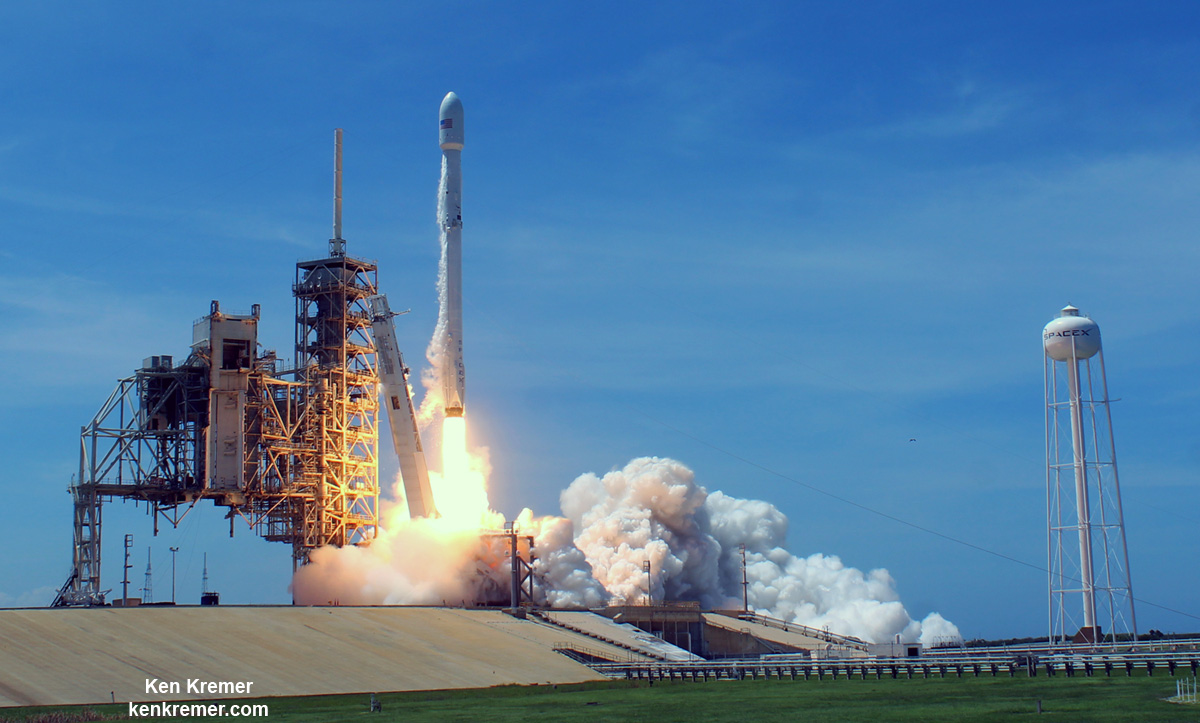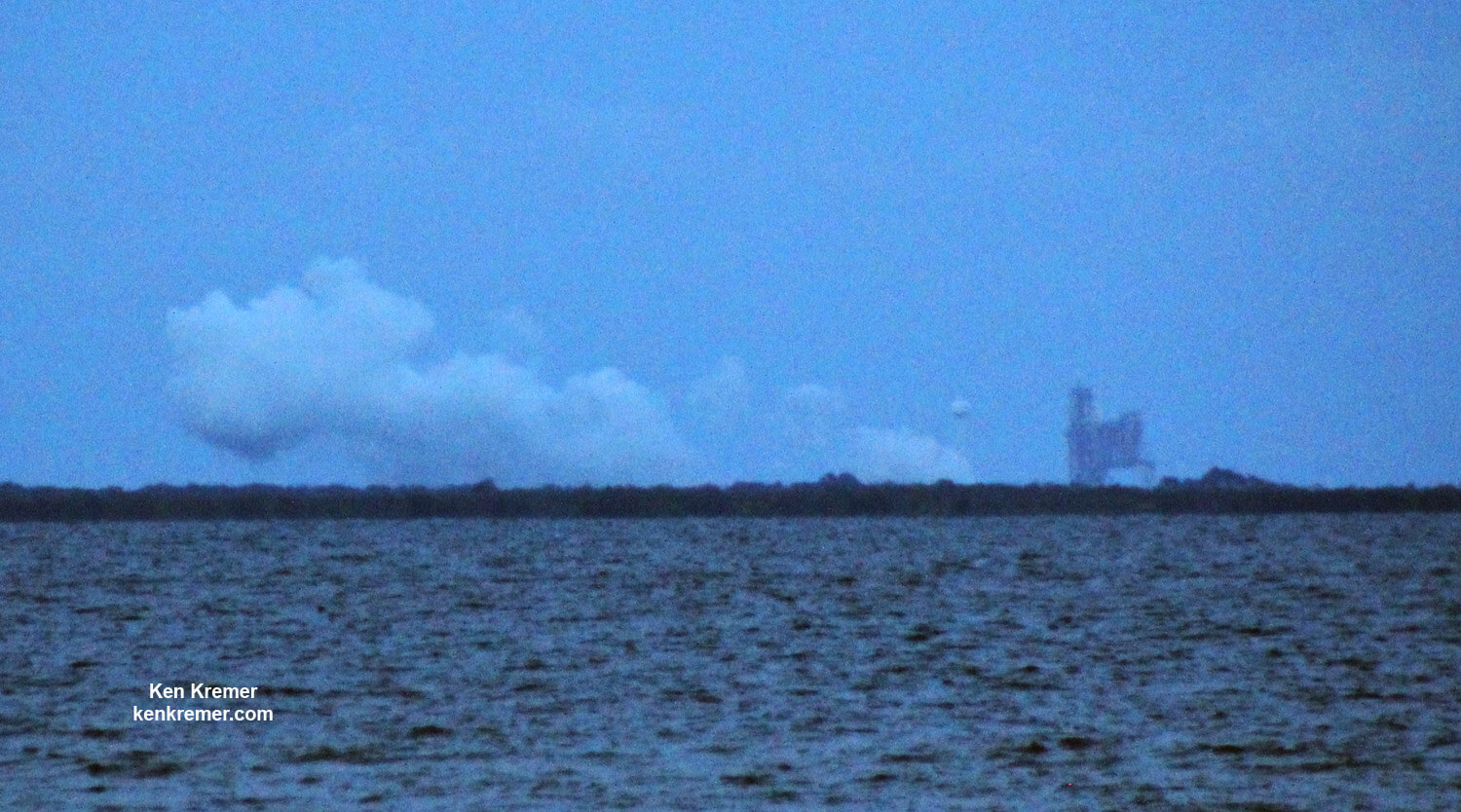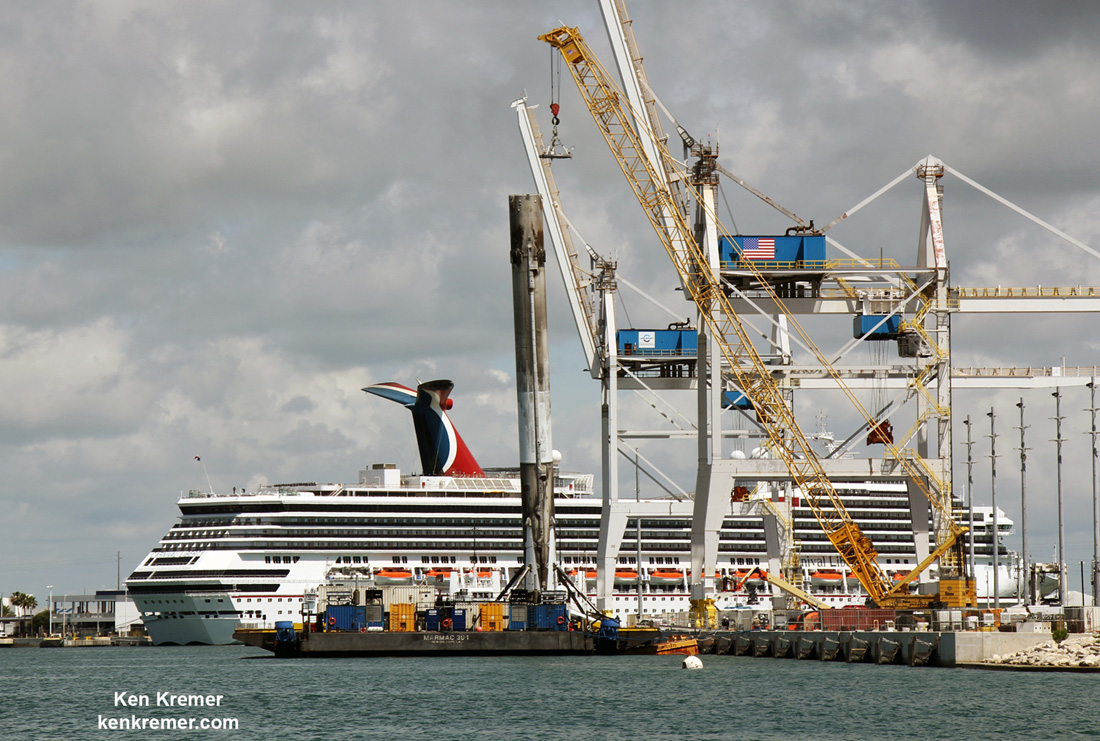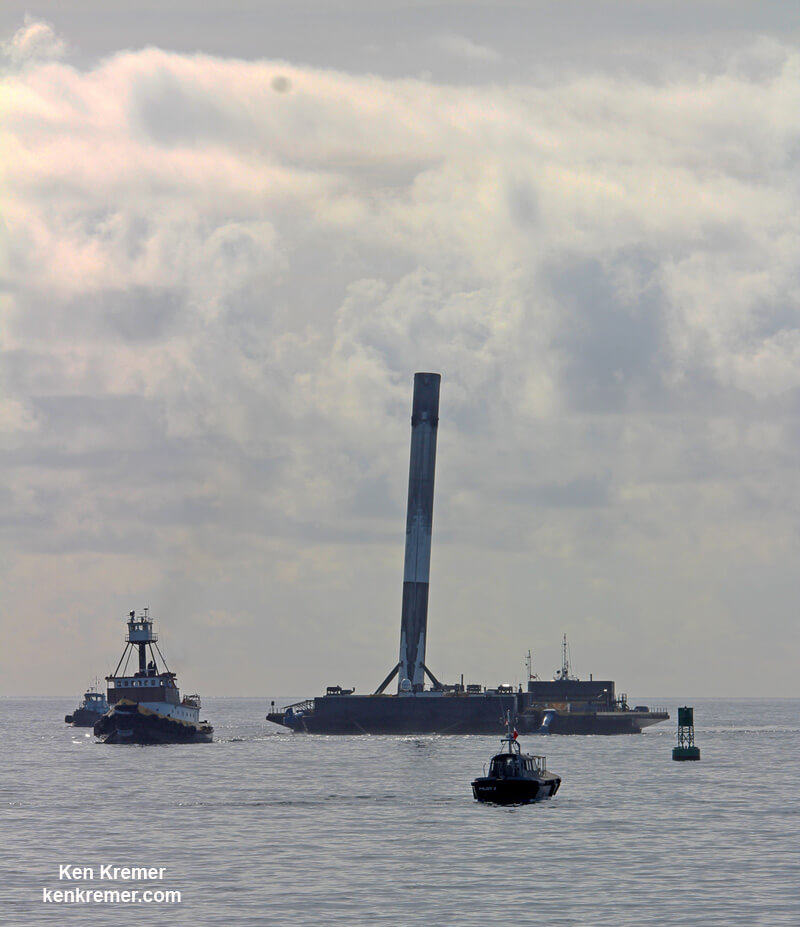
Never used SpaceX Falcon 9 is seen rising to launch position and now stands erect and poised for Intelsat 35e liftoff on July 3, 2017 at Launch Complex 39A at NASA's Kennedy Space Center in Florida. Credit: Ken Kremer/kenkremer.com
KENNEDY SPACE CENTER, FL – Spectacular 4th of July fireworks are coming tonight, July 3, to the Florida Space Coast courtesy of SpaceX and Intelsat with the planned near dusk launch of the commercial Epic 35e next-generation high throughput satellite to geostationary orbit for copious customers in the Americas, Europe and Africa.
If all goes well, SpaceX will have demonstrated an amazing launch pace with 3 rockets propelled aloft in the span of just 10 days from both US coasts.
Originally slated for Sunday evening, July 2, the launch was automatically aborted by the computer control systems literally in the final moments before the scheduled liftoff due to a guidance issue, and under picture perfect weather conditions – which would have resulted in 3 launches in 9 days.
Following the 24 hour scrub turnaround, blastoff of the Intelsat 35e communications satellite for commercial broadband provider Intelsat is now slated for dinnertime early Monday evening, July 3 at 7:37 p.m. EDT, or 2337 UTC from SpaceX's seaside Launch Complex 39A on NASA's Kennedy Space Center in Florida.
You can watch the launch live on a SpaceX dedicated webcast starting about 15 minutes prior to the opening of the launch window at 7:37 p.m. EDT, or 2337 UTC
Watch the SpaceX broadcast live at: SpaceX.com/webcast
The never before used Falcon 9's launch window extends for nearly an hour - 58 minutes - until 8:35 p.m. EDT, June 24, or 0035 UTC
Monday's weather forecast is currently 70% GO for favorable conditions at launch time.
The weather odds have changed dramatically all week – trending more favorable.
The concern is for the Cumulus Cumulus Cloud Rule according to Air Force meteorologists with the 45th Space Wing at Patrick Air Force Base.
The brand new 29 story tall SpaceX Falcon 9 will deliver Intelsat 35e to a Geostationary Transfer Orbit (GTO).
The geostationary comsat will provide high performance services in the C- And Ku-bands to customers in North and South America, the Caribbean, as well as the continents of Europe and Africa.
The Ku band service includes a customized high power beam for direct-to-home television (DTH) and data communications services in the Caribbean as well as mobility services in Europe and Africa.
Hordes of spectators lined local area beaches and causeways north and south of the launch pad in anticipation of Sunday's launch.
Many are expected to return given the promising weather forecast and July 4th holiday weekend.
The 229-foot-tall (70-meter) Falcon 9/Intelsat 353e rocket was raised erect Sunday morning, July 2 and is poised for liftoff and undergoing final prelaunch preparations.
The first and second stages will again be fueled with liquid oxygen and RP-1 propellants starting about one hour before liftoff.
Intelsat 35e marks the tenth SpaceX launch of 2017 – establishing a new single year launch record for SpaceX.

Blastoff of 2nd flight-proven SpaceX Falcon 9 with 1st geostationary communications for Bulgaria at 3:10 p.m. EDT on June 23, 2017, carrying BulgariaSat-1 to orbit from Launch Complex 39A at NASA's Kennedy Space Center in Florida. Credit: Ken Kremer/kenkremer.com
The recent BulgariaSat-1 and Iridium-2 missions counted as the eighth and ninth SpaceX launches of 2017.
Including those last two ocean platform landings, SpaceX has now successfully recovered 13 boosters; 5 by land and 8 by sea, over the past 18 months.
Watch for Ken's onsite Intelsat 35e and space mission reports direct from the Kennedy Space Center and Cape Canaveral Air Force Station, Florida.
Stay tuned here for Ken's continuing Earth and Planetary science and human spaceflight news.

SpaceX conducts successful static hot fire test of Falcon 9 booster atop Launch Complex 39A at the Kennedy Space Center on 29 June 2017 as seen from Banana River lagoon, Titusville, FL. The Falcon 9 is slated to launch Intelsat 35e on July 3, 2017. Credit: Ken Kremer/Kenkremer.com

SpaceX conducts successful static hot fire test of Falcon 9 booster atop Launch Complex 39A at the Kennedy Space Center on 29 June 2017 as seen from Banana River lagoon, Titusville, FL. The Falcon 9 is slated to launch Intelsat 35e on July 3, 2017. Credit: Ken Kremer/Kenkremer.com
Watch for Ken's onsite Intelsat 35e and space mission reports direct from the Kennedy Space Center and Cape Canaveral Air Force Station, Florida.
Stay tuned here for Ken's continuing Earth and Planetary science and human spaceflight news.

What a magnificent space sight to behold ! Cruise Ships and Recycled Rockets float side by side in Port Canaveral after recycled SpaceX Falcon 9 1st stage from BulgariaSat-1 launch from KSC on 23 June floats into port atop droneship on 29 June 2017. Credit: Ken Kremer/kenkremer.com

SpaceX Falcon 9 Booster leaning atop OCISLY droneship upon which it landed after 23 June launch from KSC floats into Port Canaveral, FL, on 29 June 2017, hauled by tugboat as seen from Jetty Park Pier. Credit: Ken Kremer/kenkremer.com
No comments:
Post a Comment